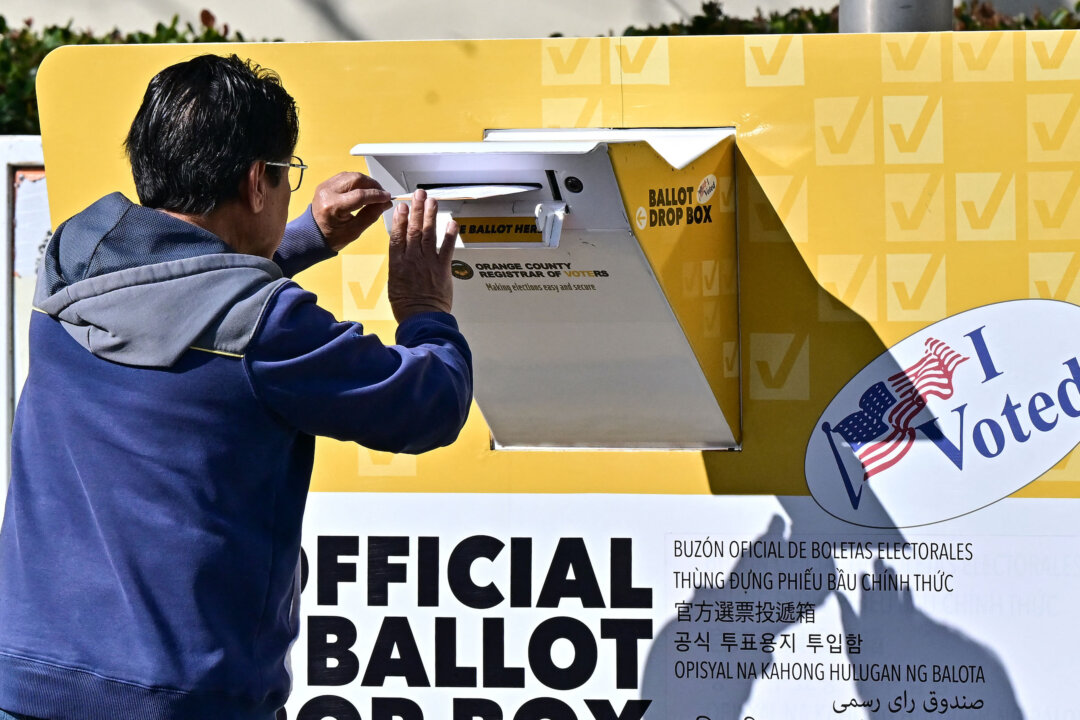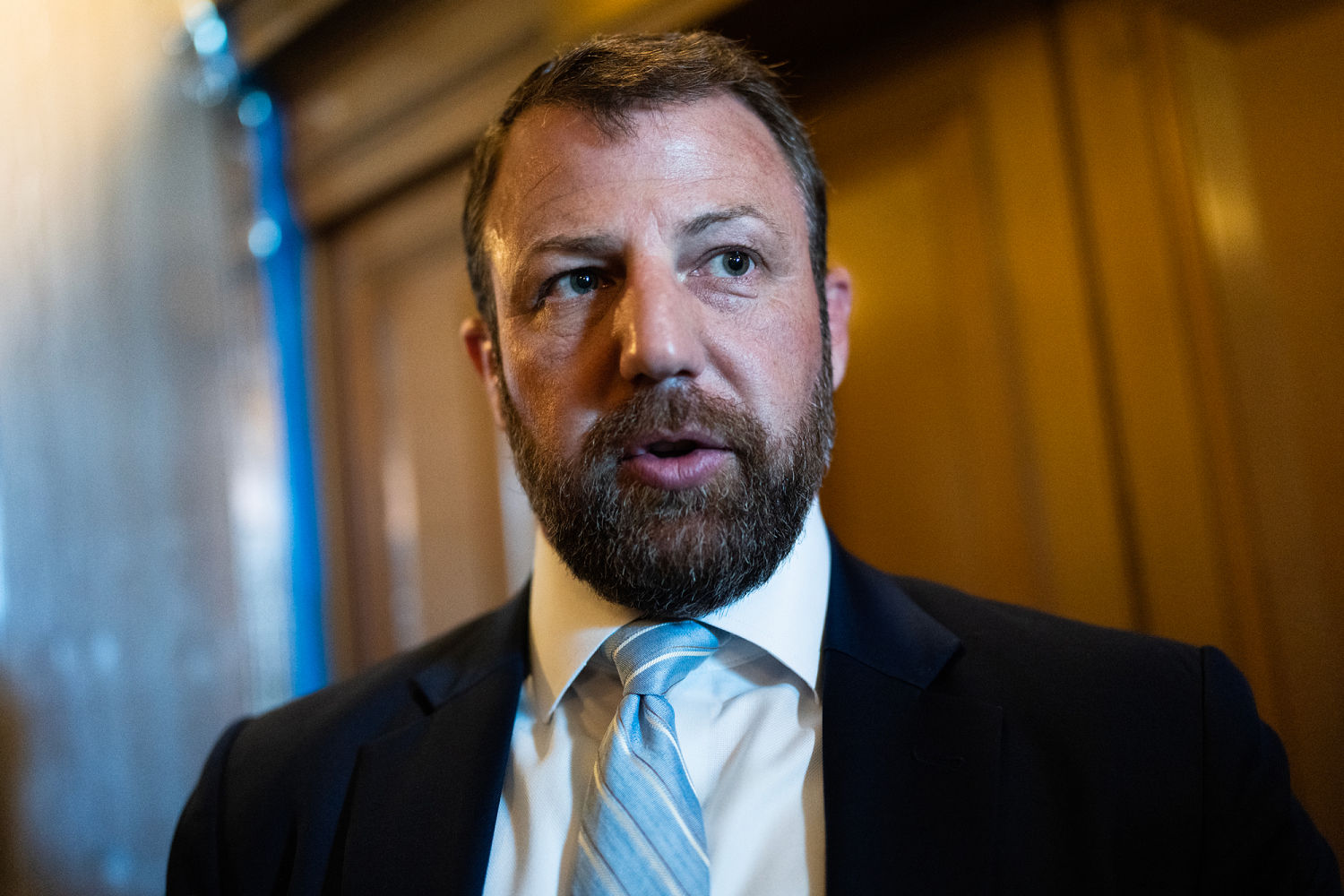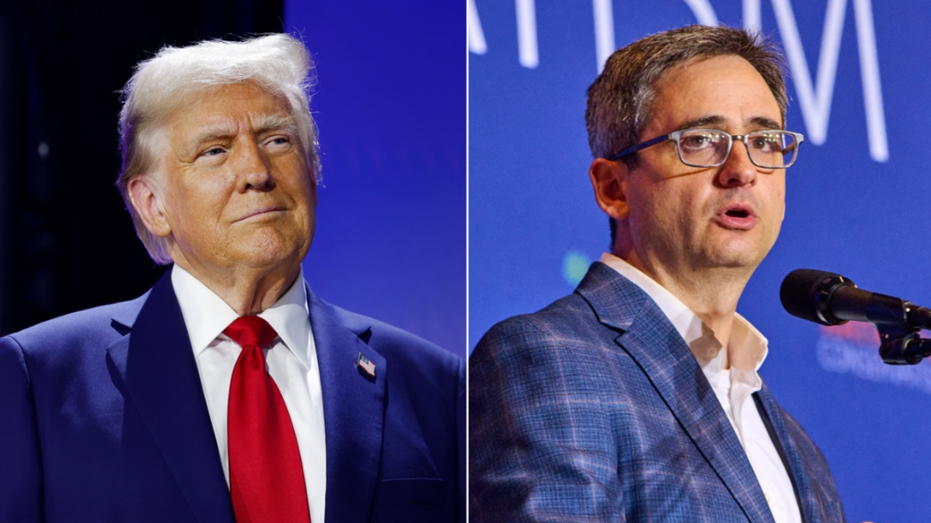Many believed that after his first term as president, Donald Trump would end up in the dustbin of history. Now Trump is back, and the United States is about to be ruled for the second time by a right-wing populist.
Trump’s goal this time is to remake the American government to enhance his power. He isn’t the first modern right-wing populist to attempt this — he is following a playbook pioneered by Hungary’s Viktor Orbán. I lived through Orbán’s power grab as a member of Hungary’s parliament and have been researching populism since. I’ve learned a few things along the way that might help Trump’s opponents understand how he won and how they can fight back.
First off, it’s important to understand that America isn’t the first country to face this kind of threat to its democracy, and it also isn’t something external. Autocratic populism is not a virus the U.S. caught from the exotic East, from Russia or Hungary. Modern-day autocracies come to power through elections, leading to electoral autocracies. These regimes are built from within the democratic system.
This is what Orbán did so successfully, which is why he has inspired other autocrats. America’s radical conservatives have been paying attention. Steve Bannon has called Orbán “Trump before Trump.” Vice President-elect JD Vance has cited Orbán as an inspiration, who “we could learn from in the United States.”
Orbán’s power grab program runs on two components that you can think of as hardware and software. The populist hardware consists of hijacked institutions. The software is made up of populist discourses and narratives that are used to create and enlist the consent of the ruled.
Dismantling the hardware of the Orbán-Trump project requires first defeating its software, so let’s start there.
The Software
Liberals often struggle against these populist narratives because the polar opposite of populism is elitism, which carries much less appeal. Here are some of the narratives that work to create the software of autocracy.
— The Folksy Outsider. Pushing against the boundaries of written and unwritten norms is a standard performative element in the populist toolbox, establishing the populist leader as a folksy outsider disrespected by liberal elites. We can expect Trump to continue using outsider mannerisms, from ordering burgers in the White House to posing as a McDonalds employee, as a symbolic nod to devalued working-class lifestyles.
— Anti-Elitism. We can also expect the culture war to escalate. Orbán passed legislation cracking down on universities in an effort to reduce the influence of liberal ideas. Vance has also declared universities “the enemy” and advised that “the closest that conservatives have ever gotten to successfully dealing with left-wing domination of universities is Viktor Orbán’s approach in Hungary.”
— Anti-Immigrant. It is also clear that Trump will continue his anti-immigrant tirades and attempt to deport millions of illegal immigrants. While in Eastern Europe, radical right populist leaders showed up before Europe’s migrant crisis, hostility toward immigration is nevertheless a favorite far-right topic. Populists create intricate narratives about the self-inflicted decline of the West, weakened by a “liberal virus” and losing out in the global competition of civilizations. These narratives are particularly potent because they also activate racial stereotypes and fears concerning historical minorities, not just new immigrants.
— Economic Nationalism. From climate-change policies to free trade agreements, liberal and centrist economic policies have also become frequent punching bags. Trump’s love affair with tariffs and his trade war with China mirrors Orbán’s fight against economic globalization. While the practical impact of Orbán’s economic nationalism is limited in Hungary, it is crucial for maintaining support among working-class Hungarians, who are otherwise relative losers of Orbán’s policies.
Economic nationalism is a vital component of the populist software but is often neglected by opponents of the far right, so let’s take a deeper look at how it works.
Before Eastern Europe became a laboratory for illiberalism in the 2010s, Western economists used it as a laboratory for neoliberalism in the 1990s. This shock therapy experiment alienated masses of lower-middle- and working-class citizens from the parties of the center-left, who often championed these policies. Similar tectonic shifts have undermined the Democrats’ support among working-class Americans.
Economic nationalist narratives used by right-wing populists glorify "makers" over "takers," resonating with working-class voters who value hard work. This narrative also serves to cement an alliance between plutocrats, billionaires and workers, which might seem paradoxical, but it isn’t: They are all portrayed as hard-working value creators as opposed to “lazy bureaucrats” and “benefit scroungers.”
At their core, some of these narratives are centered on racist or nativist ideas, but they are cushioned in several outer layers that are primarily economic — and it’s the economic messages that many who hear them react to.
That’s why labeling Trump and Orbán and their supporters as moral degenerates, or even Nazis, is tactically dysfunctional. Some of their voters are hardcore racists, but many aren’t. In fact, one of the often-neglected powers of successful radical right populists is their capacity to bring together a broad group of disillusioned voters.
Conservatives and nationalists with cultural grievances respond to the anti-migrant and anti-identity political messages. Economic nationalist messages resonate with those harboring economic frustrations over increased social insecurities and stagnating living standards.
Symbolic class politics allows populist leaders to glue together those components of the populist narrative. When economic grievances and cultural resentments combine, they create a potent force, generating consent for the autocrat to do what it takes to change the hardware.

The Hardware
Once the narratives have taken hold, the autocratic leader can change the hardware that runs the country. Most of these steps are incremental and might even be defensible on their own. But together, they build a formidable institutional power base that can keep the leader and his party in power permanently.
Here are some of those steps.
— Strengthen Executive Power. After serving one term as prime minister, Orbán lost office in 2002. He resolved that next time, he is going to be much more aggressive in strengthening his hold on power. Trump and his team have prepared for their second term in a similar way. Kevin Roberts, president of the Heritage Foundation behind the infamous Project 2025, portrayed Hungary as “the model for conservative statecraft.” Project 2025 echoes Orbán’s playbook, pushing to dismantle liberal influence in the “administrative state” and strengthen executive power. As Trump’s initial nominees also show, we can expect systematic efforts to sweep out officials deemed disloyal to the president. Trump also plans to centralize control over institutions, ranging from the Federal Reserve Board to the Federal Communications Commission.
— Discipline the judiciary. Efforts at reining in the Justice Department and exerting more influence over the judiciary will be crucial. With Republicans already controlling the Supreme Court, any new appointments during Trump’s term would cement a conservative majority for decades. Trump was also open about his plan to fire attorneys who refuse to follow his orders. Vance even mentioned the option of simply disobeying judicial authorities.
— Change Election Processes. Manipulating electoral rules and district boundaries to benefit the ruling party is a strategy that Orbán imported from the U.S. The state of Georgia is a case in point, where Republicans have increased their power to change electoral results they deem fraudulent. In Congress, Republicans have proposed far-reaching legislation that could allow Republicans to twist the electoral process to their advantage in future election cycles.
— Control the media. Orbán consolidated media control through centralized propaganda, market pressure and loyal billionaires. In the U.S., in addition to the already powerful empire of Rupert Murdoch, several recent examples show the power of friendly tycoons over the media. Elon Musk is a good case study; he used Twitter-turned-X to bolster right-wing populists and now stands to gain much from his relationship with Trump. This mirrors Orbán’s strategy to forge a strong alliance with the country’s billionaires for mutual protection and support. Trump also plans to move fast on a business-friendly agenda of tax cuts, deregulation and expanded energy production.
— Secure Control over Party. A final critical step is securing full control over the party. Just as Orbán replaced mainstream leaders with loyal outsiders, Trump co-opted much of the Tea Party in his takeover of the Republican Party. Trump’s team has positioned key allies as candidates and RNC leaders, placing his daughter-in-law as co-chair and pushing out numerous establishment staffers. And his current moves to name uber-loyalists to administration jobs regardless of their qualifications is also an effort to make Republicans in Congress bend to his will.
The Antidote
First, let’s take a breath because there’s a silver lining. Trump’s presidency will be painful for many, but democratic erosion is unlikely to reach Hungarian levels soon. That’s because the U.S. has a more robust political system, and Democrats and pro-democracy activists have a window to act before lasting institutional damage occurs.
That’s the good news. The bad news is that there’s no consensus among democracy advocates on the best way to fight illiberal, right-wing populism. However, the story of Europe’s populists offers insights into what works and what doesn’t. There are three main points of resistance.
— The courts. If there are any brazen attacks on constitutional principles, the justice system should be the first line of defense. However, illiberal regimes often operate within legal boundaries, making them harder to challenge. Courts in Europe have so far had little power against Orbán. Litigation or legal restrictions on populists also tend to backfire, boosting their image as outsiders fighting against an unjust, technocratic system, as Trump has already demonstrated in his efforts to discredit the legal cases against him. What this means is that the fight against right-wing populism is primarily political.
— The media. Fighting for media pluralism and independence is vital. Investigative journalism helps, but it tends to preach to the converted. There need to be news channels and media outlets for getting messages across to non-metropolitan areas dominated by far-right news sources. Liberal-minded billionaires should not sit idly by as they did in Hungary, watching the right take over the media. The New Right is also significantly more embedded in social media than liberals are. Those of us who favor democracy cannot let Elon Musks and Andrew Tates control the public discourse. Progressive influencers: Time to log in and post away — there’s a narrative battle to win.
— States and cities. Democrats cannot win without a powerful social base embedded throughout the country. Fighting for every seat and institution in states and cities is one of the most important things opponents of autocracy need to do. Even in hard illiberal regimes like Turkey or Hungary, free cities are channels for interaction with citizens, provide organizational resources and can be used to present alternative visions of governance.
Countering populist power structures requires first defeating populist narratives — a battle the anti-populist center is losing. The demise of Hungary’s once-strong left-liberal elites, now completely overpowered by the right, should serve as a stark warning, which leads us to the most important battleground: the Democratic Party.
To win the fight against autocracy, above all, the Democratic Party must reconnect with the working class to preserve liberal institutions. There are simply not enough educated moderate suburbanites for an electoral majority.
First, this means creating new and strengthening existing local organizational structures, especially labor unions. Popular mobilization is crucial to energize the base. Yet, such mobilization sometimes focuses on issues important to the active base only — a tactical error that should be avoided. For example, the most mobilized segments of Hungarian society tend to focus on media freedom or democracy, but these are not the primary concerns of ordinary citizens, leading to repeated failures of mass mobilizations. To create the groundwork so ordinary people will mobilize during elections, it’s important to engage with them outside elections, focusing on issues that matter to them.
Second, party financing should shift from the corporate elite to small and micro-donations. Fortunately, Democrats already have a strong base of small donors, but it needs to grow. This is the only guarantee against elites capturing the Democratic Party and provides a solid foundation to push through popular reforms that elites oppose. Freeing the party from elite capture will allow it to talk about things that matter, from the decline of middle America to inequality.
Third, commit to left-populist economic policies. Republicans have stolen key populist messages; Democrats need to reclaim them. If done smartly, populist economic policies work and are popular in swing states, even among right-leaning voters. Championing issues like breaking the chokehold of pharmaceuticals over the health system, fighting inflation or increasing the minimum wage are key to overcoming the chasm separating low- and high-income Americans and would allow Democrats to regain their pro-worker bona fides.
Fourth, learn symbolic class politics. In their free time, most Americans go to McDonald’s and not to the opera. Democrats must learn to avoid coming across as condescending intellectuals and learn to valorize the working class. Instead of solely focusing on abstract aggregates dear to experts, Democrats must pay more attention to the lived experience of economic change. Embrace the mundane and be down to earth; it will not compromise but will enliven your transformative vision of justice and democracy.
Hungary’s key lesson is you don’t protect democracy by talking about democracy — you protect democracy by protecting people. Only a democracy that works for the people is sustainable.
.png)














 English (US)
English (US)